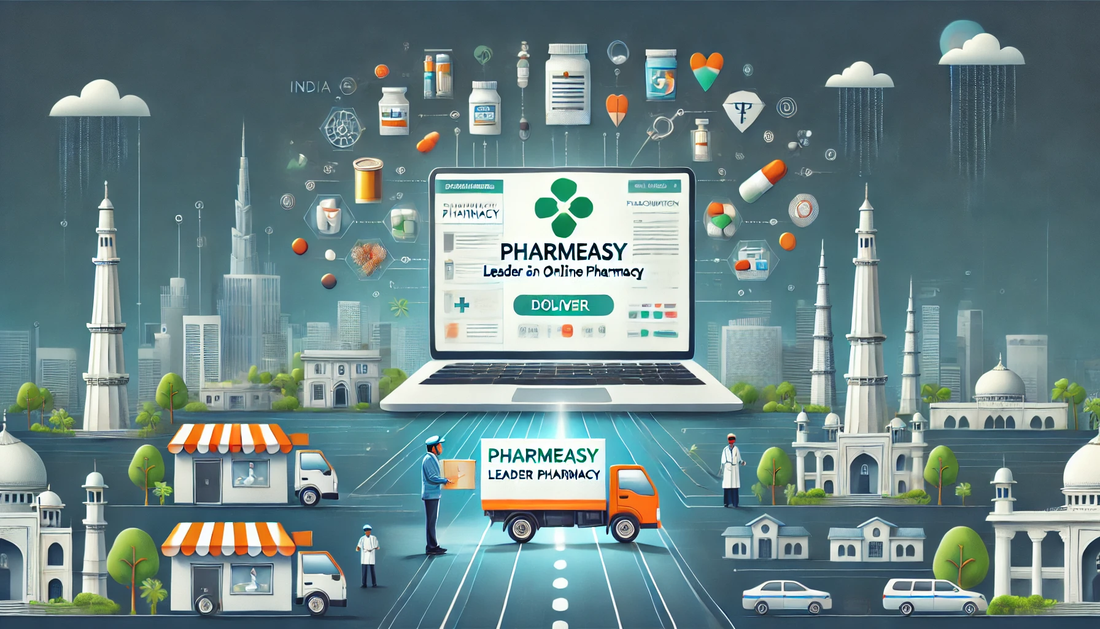PharmEasy’s rise to becoming a leader in India’s online pharmacy sector is a lesson in smart strategy, execution, and scaling.
For startup founders looking to replicate similar success, understanding PharmEasy’s approach offers actionable insights that can be applied to any industry.
Starting out as a small player in a crowded market, PharmEasy utilized a combination of technology, partnerships, and customer-centricity to scale rapidly. Here's how they did it, and what startups can learn from their journey.
1. Solving a Real Problem with a Scalable Solution
PharmEasy identified a pain point that affected millions – access to genuine, affordable medications and healthcare products.
The traditional model was plagued with inefficiencies, from long wait times to geographic limitations. PharmEasy’s solution was to leverage technology to create a seamless online pharmacy experience that solved these problems.
Takeaway for Startups: Identify a real problem that impacts a large audience. Build your solution with scalability in mind, using technology to automate and streamline processes. Ensure your offering delivers a significant improvement over existing solutions.
2. Building a Strong Supply Chain and Logistics Network
Behind PharmEasy’s success lies a well-oiled logistics machine. They formed strategic partnerships with local pharmacies and suppliers to ensure a wide range of products were always available.
Additionally, PharmEasy invested in technology to optimize supply chain management, ensuring quick delivery times and high product availability.
Takeaway for Startups: Build a robust supply chain that can scale with your business. Use technology to monitor and optimize inventory levels, minimize delays, and ensure product availability.
Partner with established players to reduce overheads and expand your reach.
3. Prioritizing Customer Experience
PharmEasy’s user-friendly app and website were designed with customers in mind. From easy navigation to secure payment options, the platform focused on delivering a smooth customer journey.
PharmEasy also ensured that customers could access vital services, like prescription uploads and doorstep deliveries, which set them apart from competitors.
Takeaway for Startups: Prioritize your customer experience at every touchpoint. Make it as easy as possible for users to navigate your platform, complete purchases, and access customer support.
A seamless experience encourages repeat business and builds customer loyalty.
4. Embracing Digital Marketing and SEO
PharmEasy leveraged a strong digital marketing strategy that included search engine optimization (SEO), pay-per-click (PPC) campaigns, and content marketing.
Their focus on creating valuable content around healthcare topics helped them rank higher on search engines, driving organic traffic and increasing brand visibility.
Takeaway for Startups: Invest in digital marketing and SEO from the start. Optimize your website and content for search engines to drive organic traffic. Use a combination of paid ads and valuable content to increase visibility and attract your target audience.
5. Expanding Through Acquisitions and Mergers
PharmEasy didn’t just rely on organic growth. They strategically acquired other companies, like Medlife, to consolidate their position and expand their market share.
These acquisitions helped PharmEasy grow its customer base, increase its product range, and dominate the Indian online pharmacy space.
Takeaway for Startups: Look for opportunities to expand through strategic acquisitions. Acquiring or merging with complementary businesses can help you scale faster, enter new markets, and build a stronger brand presence.
6. Leveraging Data for Personalization
PharmEasy utilized data to offer personalized experiences to their customers. From recommending products based on purchase history to sending reminders for medication refills, data-driven insights helped them enhance customer satisfaction and loyalty.
Takeaway for Startups: Use data to create personalized experiences for your customers. Tailor your offerings based on user preferences and behavior to build stronger relationships and increase customer lifetime value.
7. Ensuring Compliance and Building Trust
The healthcare industry is highly regulated, and PharmEasy made sure they were fully compliant with government regulations. This helped them build trust with customers and establish themselves as a reliable, safe platform for healthcare products and services.
Takeaway for Startups: Ensure that your business complies with all relevant industry regulations. Trust is critical, especially in industries like healthcare. Being transparent and adhering to regulations will not only build trust but also protect your business from legal challenges.
8. Investing in Technology and Innovation
PharmEasy continuously invested in technology to improve their platform, optimize operations, and enhance customer experiences.
From AI-powered chatbots for customer service to real-time inventory management, they embraced innovation at every level.
Takeaway for Startups: Don’t shy away from investing in technology and innovation. Staying ahead of the curve with tech advancements can help you streamline operations, offer better customer experiences, and scale faster.
9. Building a Strong Brand Identity
PharmEasy invested in building a strong, recognizable brand. Their marketing campaigns focused on customer trust, convenience, and accessibility. This strong brand identity helped them differentiate themselves in a competitive market.
Takeaway for Startups: Build a strong brand identity that resonates with your audience. Your brand should communicate your core values and what sets you apart. Consistent messaging across all channels will help build recognition and loyalty.
Conclusion
PharmEasy’s success is a testament to the power of combining technology, customer-centricity, and strategic growth.
For startup founders, the key takeaways are to solve real problems, invest in technology, prioritize customer experience, and scale smartly. By applying these principles, you can carve out a path to success, just like PharmEasy.










